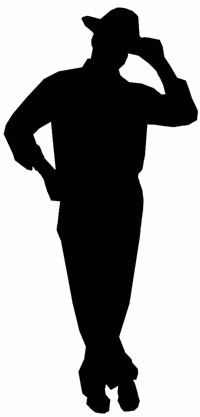Improvisation: Leaders' Perspective
Improvisation

The leader is in charge of developing the dance. While there is a certain type of accomplishment in pulling multiple patterns from memory, accomplished tango dancers will generally agree that it is superior to acquire the skills that will provide the forum for improvisation.
Each single step provides the opportunity for another. At any time the leader can switch between systems (parallel to cross systems) by changing weight, to provide a different perspective. Movements can change from linear to circular or circular to linear provided the set up is correct. Invasions can occur at virtually any time. The only element that restricts or prohibits improvisation is the preceding step. Each move that ends without attention to precision of the alignment of the axes limits the alternatives that can follow. Sloppy dancing tends to dictate subsequent less challenging moves and exiting through the salida and even resolution to regroup.
Complexity in improvisation demonstrates skills in imagination too but the underlying ability is technique: Technique that keeps the frame intact, the axis of both leader and follower uncompromised, and the practiced skill of reading subtle body language.
Simple and Complex
Simplicity involves less change and less dissociation. Walking ‘inside’ (in front of) partner is simple. As soon as we change one element we have made the situation more complex. Walking ‘outside’ partner adds the element of shaping (contra-body). Switching to cross system will require attention to shaping and a weight change that is inconspicuous.
Circular movement requires preparation. The leader must ‘manage’ the follower to orient her as well as invite her to move around the leader. This is a combination of frame, pivot, creating space, balance, timing and observation. Bringing a circular movement to an end and switching to a linear movement requires alignment of the axes, on the line.
More complex yet is the addition of invasions. All the dissociative moves of frame, shaping, weight placement, cross and parallel systems, circular movement, orientation, balance and timing come into play as well as the addition of the potential for disruption.
Follower’s Role
Both leaders and followers are on a journey and it is a mistake to look for the perfect partner. Every partner can offer some reward but it is up to the leader to not exceed the ability of the follower. Each new partner should be taken for a ‘test drive’. Slow at first, moving up the ladder of gradually increasing complexity. For a follower the main skills are balance and axis control. The follower should not compromise the frame or hang on the leader for support. The leader should test the follower’s ability to respond to Intention and Invitation. It is also important for the follower to exhibit patience and wait for the leader to initiate (every) movement – the lack of patience is considered ‘anticipation’. It is generally a bad idea for the leader to push ahead leading more complex moves if the follower is unbalanced, difficult to pivot, anticipates the lead or falls into steps.
It is not the leader’s job to try and teach the follower what treatment (move) he is trying to achieve. If a leader is implementing the skills of intention and invitation that develop the connection (not brute strength) and the follower is not responding favorably there is either a problem with the lead or the ability to follow or both. This problem should be addressed in the classroom – not at the milonga.
Social Dancing
Dance at a comfortable level for the follower and remain in control. You will look good, feel accomplished and the follower will feel secure and happy. Simplicity is good. Honed skills are good. Having a partner submit to your lead is good. Happiness lies within the limitations of your ability.

